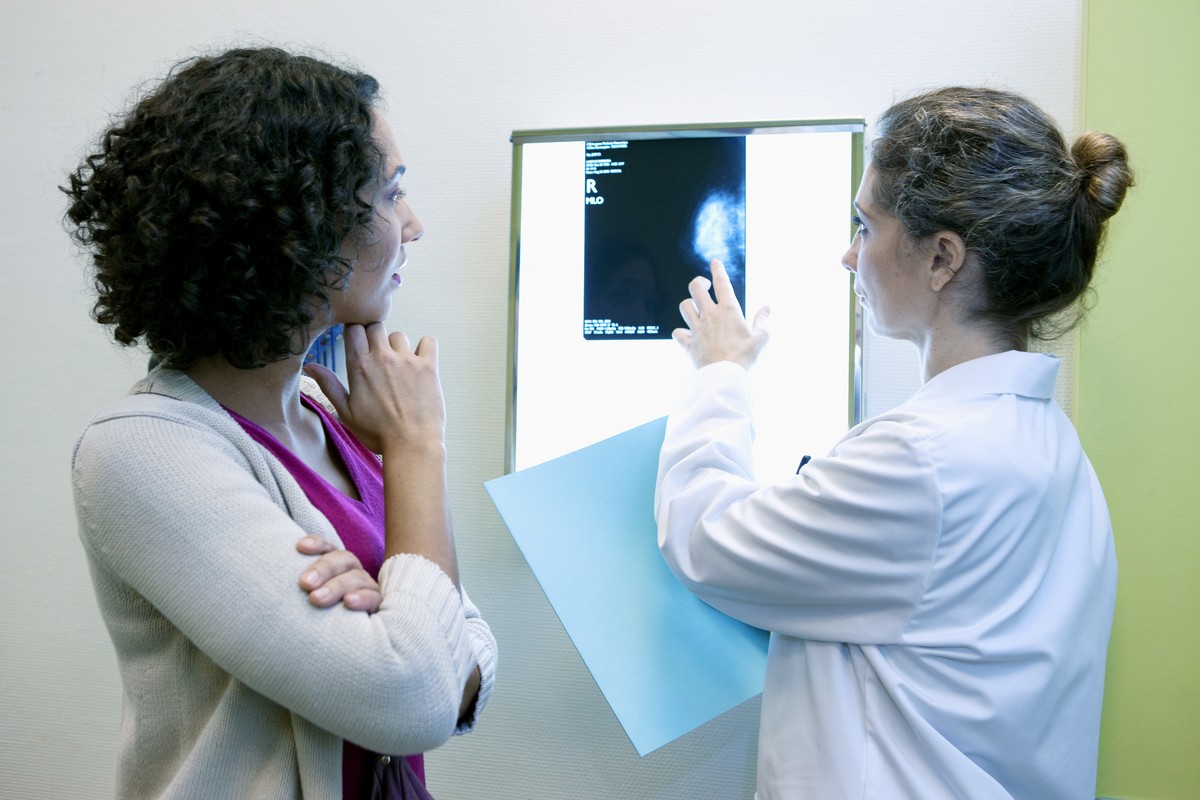
Understanding Abnormal Mammograms
Having a mammogram is a beneficial and even life-saving practice for women as they age. If you get a mammogram regularly, as recommended by your physician, there is a small chance that at some point you will receive a call or letter saying that your results were “abnormal.” Before you start searching for “breast surgery near me,” it is important to understand what an abnormal mammogram result means.
There’s a good chance that even with an abnormal mammogram, you do not have breast cancer. Only 8-10% of the women who get this news will need a biopsy, and 80% of those biopsies show benign (non-cancerous) results.1 So, why do your primary care physician and women’s health clinic strongly recommend regular mammograms?
It’s important to take a deeper look into what causes an abnormal mammogram, what the follow-up appointment might entail, and how successful mammograms are at finding breast cancer in women.
How Often Does a Mammogram Find Breast Cancer?
Mammograms are extremely good at finding breast cancer when it’s present. In almost 90% of cases, a mammogram will reveal signs of an existing breast tumor.2 For this reason, mammograms are the most recommended breast cancer screening for women, especially those 50 or older. The test is extremely sensitive, revealing early signs of cancer.
Because of the tests sensitivity, an abnormal result is generated about 10% of the time.2 The more mammograms you have in your lifetime, the more statistically likely it becomes that you will have an abnormal mammogram result. After 10 screenings, your likelihood of receiving a single abnormal result rises to 50%.2 This means that, over time, half of women being regularly tested might be notified that they should return for another appointment.
An abnormal result simply means there is something to investigate. Your health care team will want you to come in for a follow-up visit in order to find out more.
What Causes a Mammogram to Be “Abnormal?”
There are many reasons that something might show up on a mammogram which has a benign, harmless, cause. Some of these include:2
- Microcalcifications - small calcium deposits
- Cysts- fluid-filled pockets of tissue within the breast
- Benign tumors - Masses of tissue which are not cancerous
- Dense areas of breast tissue, sometimes associated with menopausal hormone therapy (MHT)
What to Expect at Your Abnormal Mammogram Follow-Up Appointment
Depending on what the breast cancer screening shows, there are several tests that might be performed at your follow-up appointment. Your doctor might recommend some or all of these:
- Diagnostic Mammogram. This is a more in-depth series of diagnostic images which take a closer look at the areas of concern or repeat views which were unclear. The process will be similar to your original mammogram test, but it may be performed by specialized diagnostic imaging centers like Crystal Run Healthcare.
- Diagnostic Ultrasound. This test uses sound waves to create an image on a computer. A cold gel is used, along with a hand-held transducer, which is moved over your breast firmly while you lie on your back. An ultrasound is a painless procedure which offers your specialist a better view of a mass or structure shown on the mammogram.
- Breast MRI (Magnetic Resonance Imaging). An MRI uses radio waves and magnets to build a detailed digital picture of internal structures. You will be placed inside the MRI machine lying face down. The procedure is painless but noisy, and sometimes it involves an injected contrast agent that causes a cold or tingling sensation.
After one or more of these tests, you will meet with your primary physician or women’s health specialist to review the additional information they provided. When the results indicate a benign cause for your abnormal result, very often their recommendation will be to return in six months or a year for another mammogram, and nothing more needs to be done. However, if you’re not comfortable waiting or are high-risk, you may want to see a breast surgeon to discuss your options. In 8-10% of cases,1 your doctor may recommend a biopsy to investigate further.

What Is a Breast Biopsy?
A biopsy is usually an outpatient medical procedure which extracts cells from within the body for microscopic examination. Biopsies are often performed on any unexplained mass within the body and results typically take about a week. Most breast biopsies are negative, meaning free of cancerous cells, when examined.
There are several ways these cells can be extracted:
- Fine needle aspiration. This method uses a very thin needle to remove a small bit of tissue or fluid from inside the area of concern. An ultrasound may be used during the process to locate the precise spot to be tested.
- Core needle biopsy. This procedure uses a larger needle to extract several samples of the target tissue. You will probably be given a local anesthetic to numb the area and, again, an ultrasound device may be used to guide the extraction.
- Stereotactic Breast Biopsy. This procedure is done using mammography to identify and biopsy calcifications or abnormal tissue.
- Surgical biopsy. Depending on the location and depth of the area to be tested, you may need a surgical biopsy. This may be performed under general anesthesia as an inpatient procedure, meaning you will stay in the hospital overnight, or it might be done with local anesthesia, and you will be able to go home afterward, but will need a friend or family member to drive you. You will likely have stitches and a small scar.
It Is Normal to Feel Anxious While You Wait
Waiting for your follow-up appointment and additional test results might make you feel nervous and worried. These feelings can arise any time someone needs a follow-up from a health screening. Some tips to help calm your nervousness include:
- Asking questions of your provider until you fully understand the tests you will need
- Making lists of new questions as you think of them, to bring to your next appointment
- Talking with supportive friends or family about what is happening
- Bringing a trusted friend or partner to appointments with you to offer support, take notes, and share their perspective on what was said.
What if Your Abnormal Mammogram Does Indicate Breast Cancer?
Of course, the reason we feel nervousness is because, in the back of our minds, we know there is a small chance that an abnormal mammogram does show the first sign of breast cancer. So, let’s discuss what would happen in that small percentage of cases, and the many breast cancer treatment options that are available.
Your doctor will consult with you and may do further tests to determine exactly what type of breast cancer is present, if it has spread elsewhere, and if it is sensitive to hormones like estrogen and progesterone. Knowing this information will determine which treatment options would be most successful for you.
It may be comforting to know that there is a 99% 5-year survival rate for women who are diagnosed with cancer while it is still confined to the breast and most breast cancers are found at this stage.3 Your breast cancer treatment plan may include one or more of these treatment options:
- Breast cancer surgery. Surgically removing all or most of the cancerous cells is a direct and effective approach. There are different levels of “lumpectomies,” from those which are almost unnoticeable to breast removal surgery or mastectomy.
- Radiation therapy. By using high-energy waveforms, radiation therapy targets groups of cancer cells which are too small or otherwise not suited for surgical removal.
- Chemotherapy. This treatment uses strong medications to kill cancer cells throughout the body when they are widely spread or likely to spread to lymph nodes or other body parts.
- Hormone therapy. Many breast cancers are highly sensitive to hormones, usually estrogen or progesterone, which are produced in the ovaries. By using certain medications, these hormone levels are lowered or the receptors on the cancer cells are blocked from receiving the hormones, which slows or stops the growth of these types of breast cancer.
- New medications and clinical trials. New classes of medication have been developed and have been shown to be successful at stopping breast cancer. Some of these mark cells for the immune system to target and others destroy enzymes that feed cancer cells. Scientists are rapidly gaining more understanding of how different types of cancers spread and how to stop them. Clinical trials are always underway for cancer-fighting medications.
- Reconstructive plastic surgery if necessary. If you do have breast cancer surgery, there are medical procedures which will restore your natural appearance if you choose. Some women decide not to pursue cosmetic surgery options, as this is a very personal choice. Fighting back against cancer and remaining confident may mean different things to different women.

Taking the Next Steps After an Abnormal Mammogram
If you have received the news that your mammogram was abnormal, the best next step is to schedule a follow-up appointment and additional testing, as your doctor recommends. You may want to also follow up with a breast surgeon to discuss your options and determine your lifetime risk of developing breast cancer. You will want to see a multi-disciplinary team that focuses on breast cancer diagnosis and treatment. At Crystal Run, our comprehensive breast surgery team consists of a breast surgeon, surgical oncologist, and plastic and reconstructive surgeon along with oncologists.
Our breast cancer specialists at Crystal Run Healthcare in New York have the expertise to provide you with fast and accurate follow-up testing or breast cancer treatment. If your abnormal mammogram does indicate treatment is needed, you will be in the best possible hands to take advantage of the latest and most advanced breast cancer treatments available.
Understanding your abnormal mammogram results starts with a team that understands your concerns and can set your mind at ease about additional testing and treatment options. Schedule a consultation today and get the clear answers you need from a breast cancer team you trust.
Sources:

 Optum Radiology at Crystal Run Healthcare
Optum Radiology at Crystal Run Healthcare Request medical records online
Request medical records online